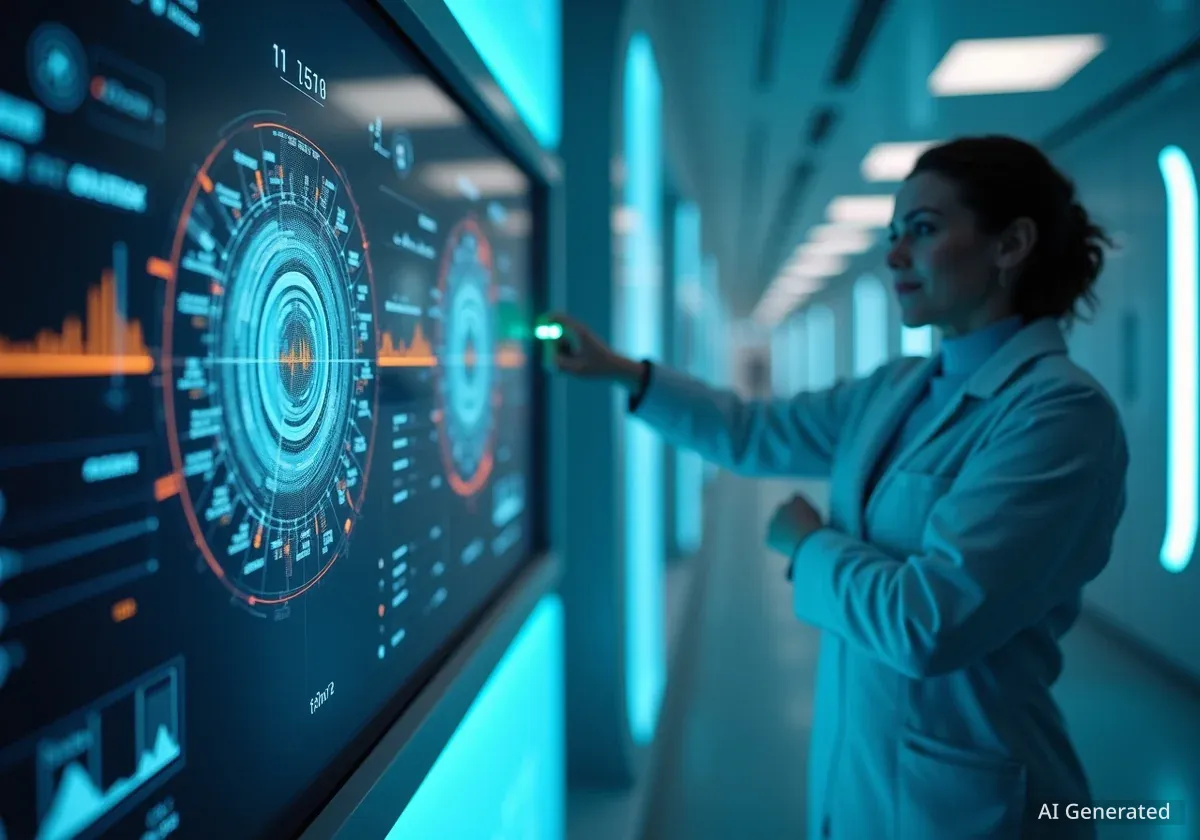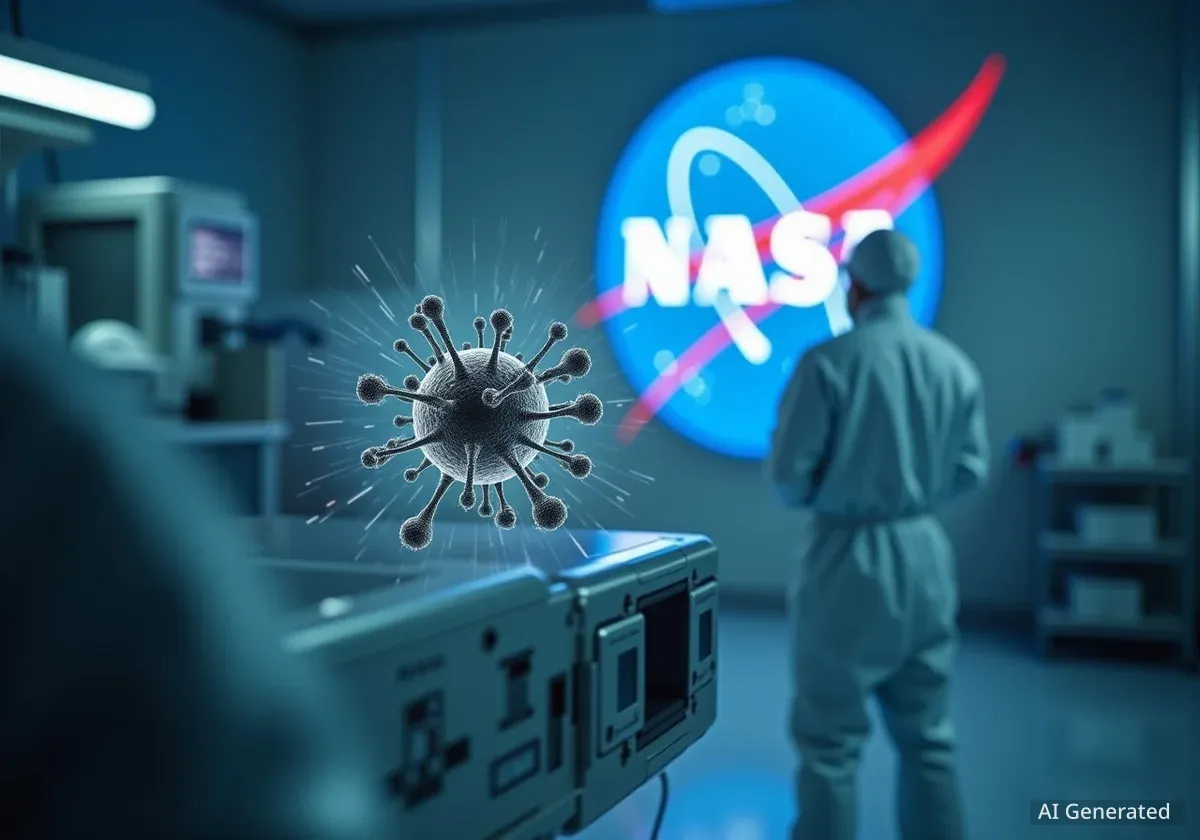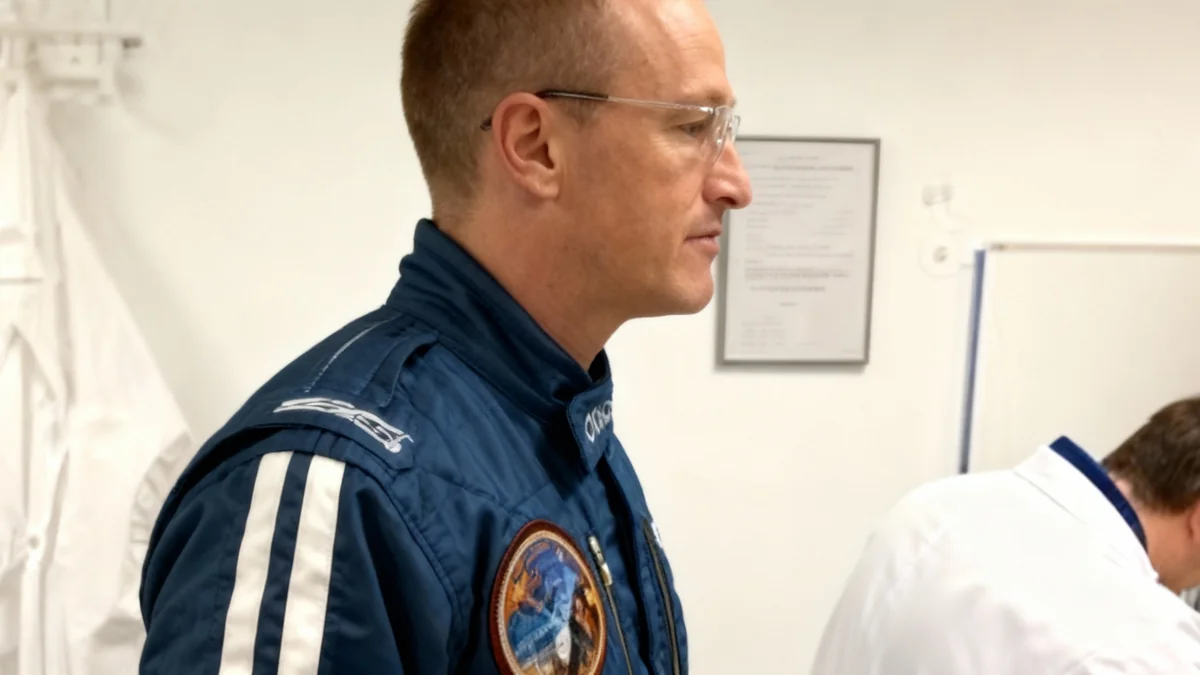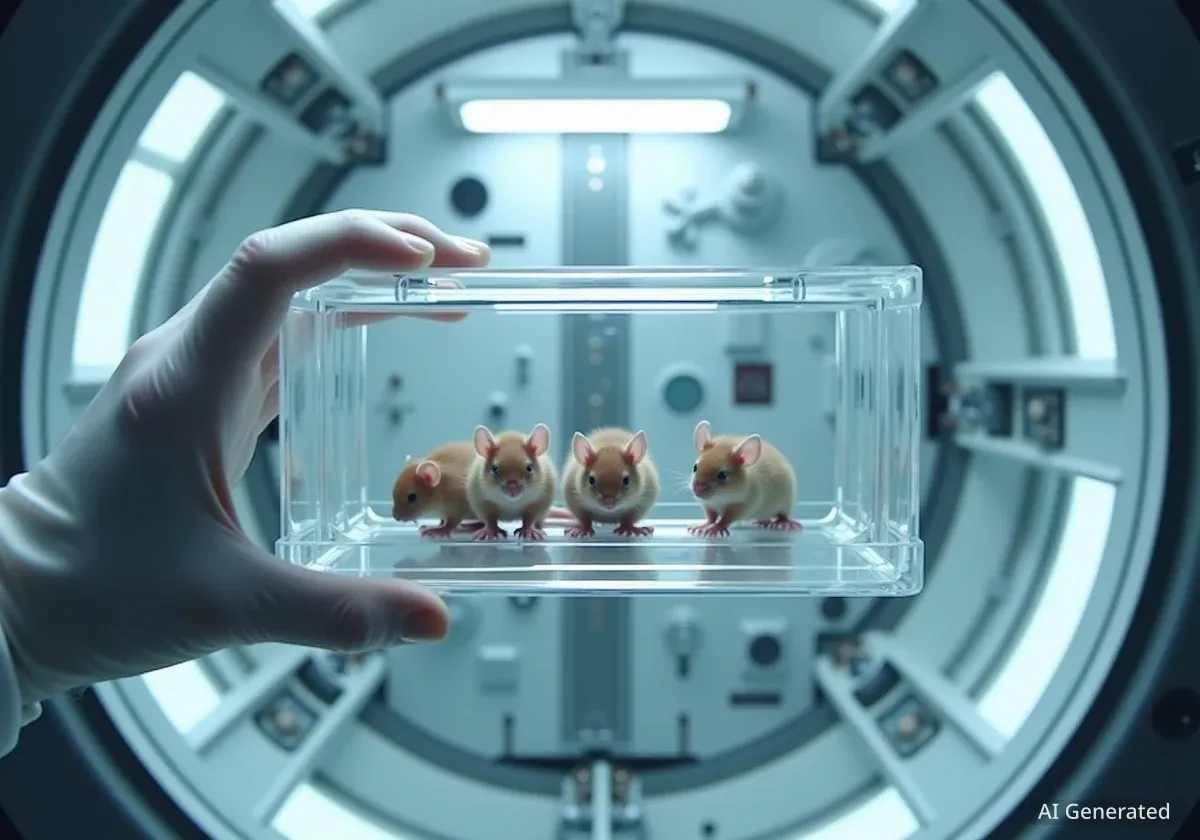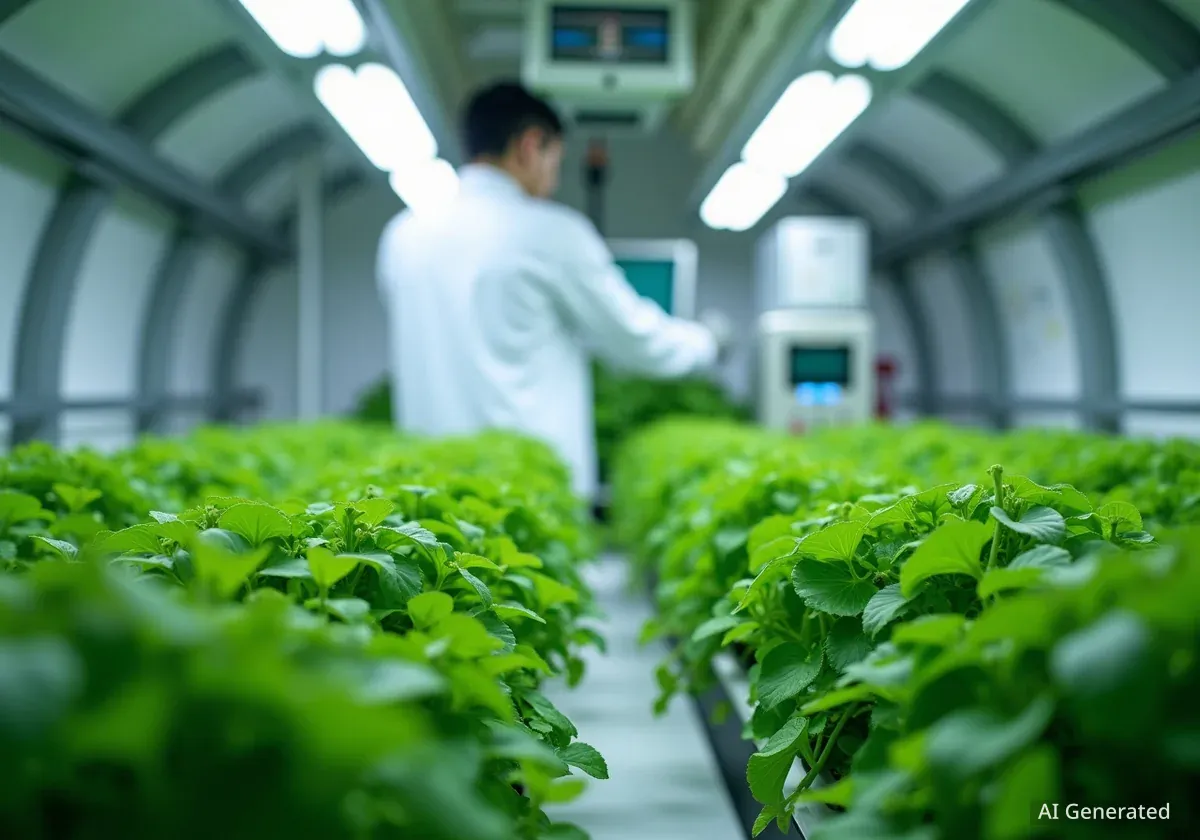NASA and Google are collaborating on an advanced artificial intelligence system designed to provide medical support for astronauts on long-duration space missions. The project, known as the Crew Medical Officer Digital Assistant (CMO-DA), aims to offer autonomous diagnosis and treatment guidance, a critical need as human exploration extends farther from Earth.
While developed for the unique challenges of spaceflight, this technology holds significant promise for improving healthcare access in remote and underserved regions on our own planet.
Key Takeaways
- NASA and Google are jointly developing an AI-powered Clinical Decision Support System called CMO-DA to assist with astronaut medical care.
- The system uses natural language processing and machine learning to analyze health data and provide real-time guidance.
- Astronauts face unique health risks in space, including bone density loss, muscle atrophy, and radiation exposure, increasing the need for autonomous medical support.
- Related projects include AI-powered eye-tracking to monitor cognitive fatigue and Canadian-developed modules for rapid health checks.
- Technology developed for astronaut health is being adapted for terrestrial use, particularly in remote areas, disaster zones, and other challenging environments.
The Unique Medical Challenges of Space Exploration
As space missions prepare to venture to the Moon, Mars, and beyond, ensuring crew health becomes a paramount challenge. The human body is not adapted to the microgravity and high-radiation environment of deep space, leading to a range of physiological problems.
Without the constant pull of gravity, astronauts experience significant health effects. Bones can lose density at an accelerated rate, and muscles, including the heart, begin to weaken from lack of use. The body's sense of balance can be disrupted, vision may change due to alterations in eye shape, and even the digestive system can be affected.
Health Risks in Microgravity
Beyond bone and muscle loss, long-term space travel exposes astronauts to increased levels of cosmic radiation. This elevates the lifetime risk of developing cancer, degenerative diseases, and abnormalities of the central nervous system.
These space-specific issues are compounded by the standard risks of illness and injury that can occur anywhere. However, on a multi-year mission to Mars, immediate access to a doctor or real-time communication with Earth-based medical teams may be impossible due to significant communication delays.
An AI Doctor for Deep Space Missions
To address these challenges, NASA has partnered with Google to create the Crew Medical Officer Digital Assistant (CMO-DA). This system is an automated Clinical Decision Support System (CDSS) that leverages AI to help manage astronaut health autonomously.
The primary goal is to provide a reliable tool for diagnosing and treating medical conditions when direct human medical expertise is unavailable. It can also support a designated crew medical officer or a flight surgeon by offering data-driven insights for medical decisions.
How the CMO-DA System Works
The AI model was trained on a vast repository of existing spaceflight medical literature. Using sophisticated natural language processing and machine learning algorithms, it can provide real-time analysis of an astronaut's health and performance.
Initial trials have demonstrated its potential for accurate diagnosis in scenarios such as ankle injuries, flank pain, and ear pain. Currently, NASA and Google are working with medical doctors to further test and refine the system, with plans to integrate data from medical devices for more comprehensive analysis.
"This tool represents an important milestone for AI assisted medical care and our continued exploration of the cosmos."
<
Expanding the Scope of AI Health Monitoring
The CMO-DA is not the only initiative using AI to protect astronaut health. Several other projects are underway to monitor and predict health issues before they become serious problems during a mission.
Monitoring Cognitive Fatigue
One such project involves the NASA-funded Translational Research Institute for Space Health (TRISH) and HarmonEyes, an AI-powered eye-tracking platform. They are developing the Human State Monitoring and Readiness Tool (H-SMART) to measure cognitive load and fatigue.
The system analyzes eye metrics to predict an astronaut's mental state more accurately than self-reported feelings of tiredness. According to Adam Gross, CEO of HarmonEyes, the goal is to demonstrate that H-SMART can offer "superior prediction of astronaut's cognitive and fatigue states solely based on eye metrics." A test of the system is planned for late this year in Antarctica, an environment that simulates the extreme conditions of space.
International Efforts in Automated Healthcare
Canada is also investing in automated healthcare for its astronauts. The Canadian government recently awarded grants ranging from $150,000 to $650,000 to four firms to develop Connected Care Medical Modules (C2M2s). These companies are:
- Baüne
- Lunar Medical
- CardioComm Solutions
- ResusMind
These portable devices are designed to quickly check up to 40 different health indicators, including blood pressure, pulse, and blood oxygen levels. An integrated AI then uses this data to propose a potential diagnosis.
Bringing Space Technology Down to Earth
History has shown that technologies developed for space exploration often find widespread use on Earth, from camera phones to athletic shoes. The advancements in AI-driven astronaut healthcare are expected to follow a similar path, with significant potential for terrestrial medicine.
Jim Kelly of Google notes that the system holds promise for providing "early access to quality medical care in remote areas." This is a key reason for Canada's investment, given its vast and sparsely populated territories. Other potential applications include providing medical support in war zones or after natural disasters where infrastructure is damaged.
From Space Health to Global Health
The commercial sector is already working to translate these innovations. BioAstra, a space healthcare company, has launched a spinoff called medAstra to market its technologies to healthcare organizations on Earth. These technologies include health-monitoring wearables and advanced imaging tools.
The company's mission is to apply the rigorous engineering standards required for space to terrestrial medical applications where protocol failures are not an option.
"Medical systems that keep astronauts safe in orbit can, and should, raise the standard of care on Earth. We built adherence tools to function in the chaos of microgravity. That same engineering discipline applies anywhere protocol failure isn't an option."
As these technologies mature, the AI systems designed to keep astronauts healthy on their way to Mars could soon help deliver critical medical care to the most remote corners of our own world.

